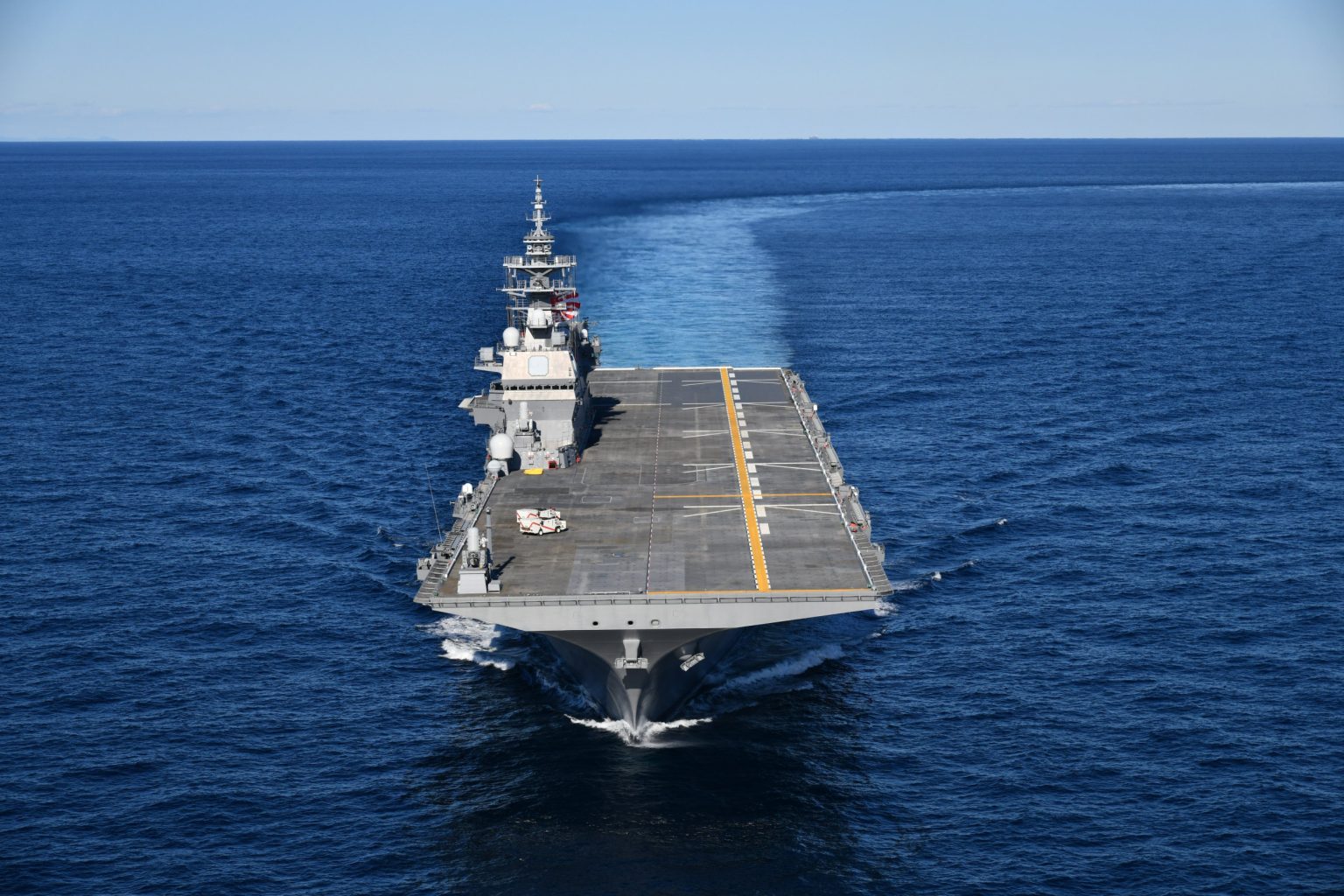The JS Kaga, an Izumo-class warship commissioned in 2017, completed refitting on March 29 after two years of work at the Japan Marine United shipyard in Kure. The vessel’s trapezoidal bow was converted into a rectangle, and its deck was painted with new yellow markings to support the operation of F-35B Lightning II stealth fighters. Adm. Ryo Sakai stated that the Kaga would undergo tests, including sea trials, in the coming months, with upgrades planned for the JS Izumo later this year to enhance interoperability with the United States. Initial modifications to the Izumo began in 2021, with successful testing of a U.S. Marine Corps F-35B on its deck.
Upgrades to the Izumo and Kaga included heat-resistant coating on the flight deck, making them resemble the U.S. Navy’s Wasp- and America-class ships that operate STOVL aircraft like the F-35B. Tokyo’s plan aims for both ships to carry F-35B units by 2027, with the Kaga scheduled for another overhaul in 2026. Japan has ordered 42 F-35Bs in addition to 105 F-35As for its Air Self-Defense Force, reflecting a surge in defense spending due to tensions with neighbors like China. Japan’s defense white paper emphasizes self-reliance and deterrence to defend against potential threats.
Retired Navy officers have highlighted the importance of upgrading the Izumo class to operate F-35B STOVL aircraft, given the challenges of defending against long-range ship-killing missiles. The F-35B would enhance the ships’ abilities in sea-control roles and island defense scenarios, offering valuable capabilities against various threats. Japan’s plans for its naval forces aim to strengthen its defensive posture and secure its interests in the region amid growing regional tensions and military activities.
Japanese leader Fumio Kishida’s visit to Washington, D.C., includes discussions with President Joe Biden to announce a significant update to the U.S.-Japan security treaty, solidifying Tokyo’s role as a key American ally in the region. Japan hosts a significant number of forward-deployed American troops, demonstrating the close military cooperation between the two nations. China has raised objections to Japan’s military modernization efforts, particularly its plans to export next-generation fighter aircraft developed with NATO partners. Beijing has urged Japan to reflect on its past aggression and avoid militaristic actions that could impact regional stability.
The evolving security dynamics in the Indo-Pacific region, with China’s military expansion and regional rivalries, have prompted Japan to enhance its defense capabilities and strengthen its alliance with the United States. Tokyo’s efforts to upgrade its naval assets, including the Izumo-class warships, align with its strategic goals of deterrence and self-defense. The ongoing modernization of Japan’s military reflects its commitment to regional security and stability amidst complex geopolitical challenges. As Japan continues to invest in advanced military technology and capabilities, it seeks to navigate the changing security landscape and protect its national interests effectively.


